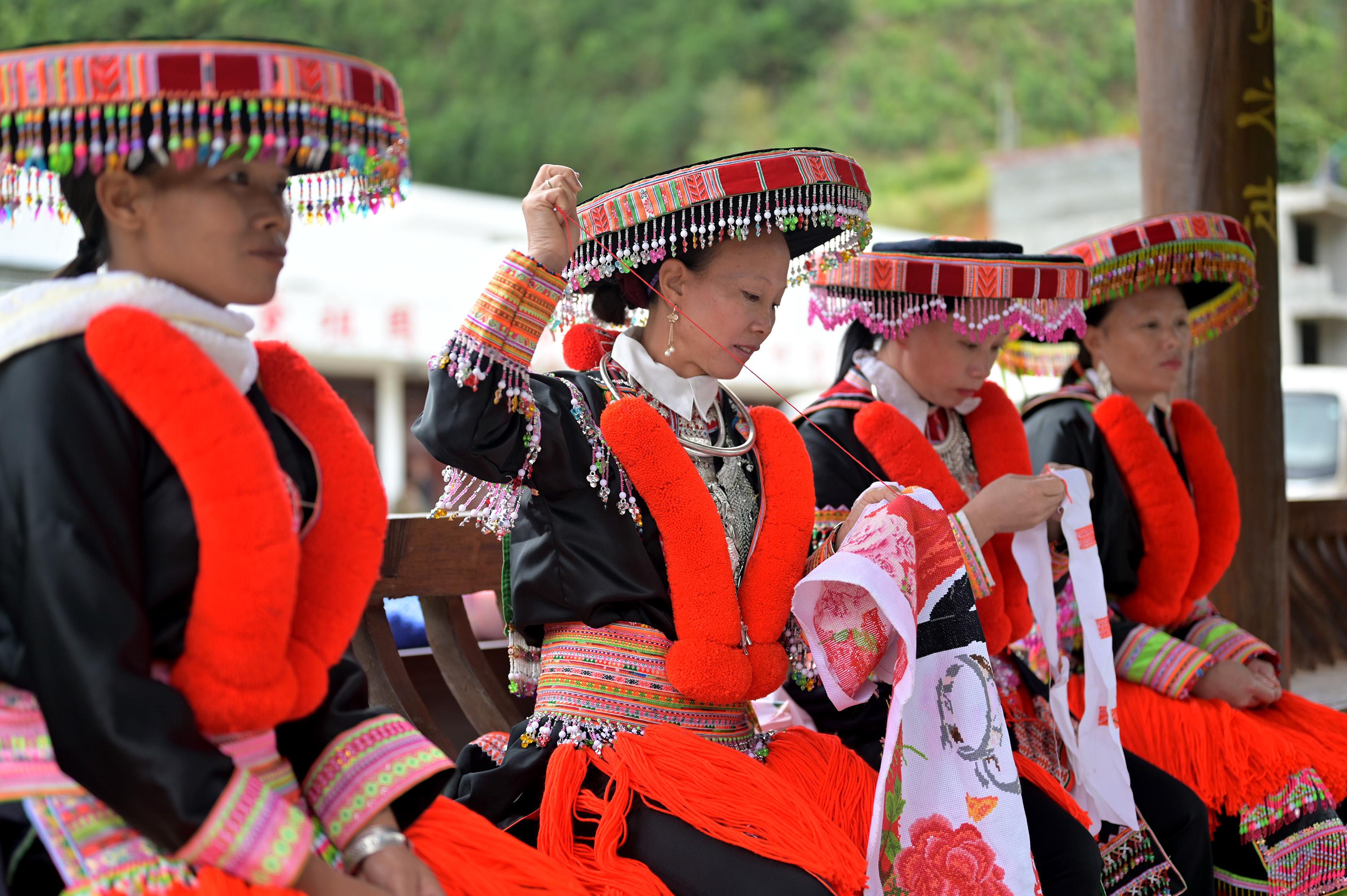Propelling prosperity through rural revitalization
Region adopts comprehensive approach to fuel development in remote mountainous areas


Improving lives
When Xi was China's vice-president in 2010, he visited Xinli village in Baise's Tianyang district to learn about local people's lives.
Farmers there previously had to plant corn in cracks between rocks due to shortages of water and quality soil.
Xi visited Ma Zhenggui's ramshackle house. Ma earned 2,000 yuan a year from growing sugarcane and had to apply for a loan to send his son to vocational school.
"My family worked hard to make ends meet then," the 51-year-old Ma said.
"Drinking water was insufficient. We had to collect and store rainwater."
In 2013, local authorities modified local agriculture, improved roads and increased drinking water and irrigation networks.
Ma began growing more vegetables and fruits, including mangos, and now earns nearly 100,000 yuan a year. Tianyang district itself produces mangos and vegetables for the northern parts of the country in winter.
"We work every day, all year," Ma said.
"We grow mangos from June to September and vegetables from October to May."
Most farmers in Tianyang have similarly improved their situations.
It is difficult to develop industry in Xinli because the barren mountainous area lacks convenient transportation and natural resources.
"Relocation seemed to be the only solution," said the village's Party secretary, Luo Chaoyang.
In 2013, Luo visited 11 places hit by extreme poverty to understand their situations.
"It took me four hours to walk from one place to another because the village was loosely connected by poor roads," Luo recalled.
Luo said he was upset at seeing unhappy children and elderly people on their own.
"If we can't help the villagers live better lives, all the village committee members should quit," he said.
Luo rolled up his sleeves and got to work. Xinli set up a construction management committee to mobilize villagers, raise funds, plan land use and relocate some farmers.
Xinli tapped 5 million yuan donated by Guangzhou to launch its relocation program, which helped 158 families living in poverty to move to their new houses a kilometer away.
The village has since undergone tremendous changes over the past decade.
There are more than 20 paved roads totaling 60 kilometers. Farmers' living conditions have also improved significantly. Their houses have been renovated and they enjoy access to running water.
The village also switched to more profitable crops. Its mango and banana production bases each cover 133 hectares.
Per capita income exceeded 10,000 yuan in 2019, compared with 3,000 yuan in 2010.
"Next, we'll develop tourism and make our hometown more attractive," Luo said.
Baise's Party committee secretary Peng Xiaochun said, "The development of Baise is a story of how the locals struggled to escape poverty and made remarkable achievements."
Peng said the government initiated poverty alleviation measures in 1985. In 2012, Baise was home to nearly 1.7 million people living below the poverty line, which was 2,000 yuan a year then. The number fell to 37,800 by the end of 2019. Rural infrastructure has greatly improved since 2016 thanks to new investments, he said.
Baise's government has also invested 13.3 billion yuan in road construction, paving 15,300 kilometers in total. It spent 13 billion yuan to help 181,800 people relocate to new houses. Potable water has also been piped to 1.99 million people.
Guangxi still has much to do to combat extreme poverty, as 240,000 residents remain poor, according to the autonomous region's poverty alleviation department.
"In the past four years, 4.5 million people have been lifted out of poverty with government support. But the remaining impoverished areas in Baise and Hechi are the hardest to tackle," the department's director Jiang Jiabai said.
Growing together
On April 7, the State Council, China's Cabinet, gave Baise a special place in national development, when it approved the city's designation as a new pilot zone for advancing China's opening-up.
In a statement, the State Council said the pilot zone will accelerate the development and opening up of border areas. It will strengthen cooperation with members of the Association of Southeast Asian Nations, especially Vietnam; enhance infrastructure connectivity and industry; create a high-quality, open economic system in the border areas; and propel poverty alleviation and rural vitalization.
It will also boost the construction of the China-Indochina Peninsula Economic Corridor, according to the statement. The economic corridor, an important part of the Belt and Road Initiative, originates in Guangxi and neighboring Yunnan province and runs through six ASEAN countries-Vietnam, Laos, Cambodia, Thailand, Malaysia and Singapore.
"We are very excited to see that the provincial government is further rolling out a series of preferential policies to accelerate the opening up of the pilot zone," said Qin Weifeng, deputy director of the Baise publicity department.
"I believe it will be a historic opportunity for our people to change our fates and find the way to prosperity."
























